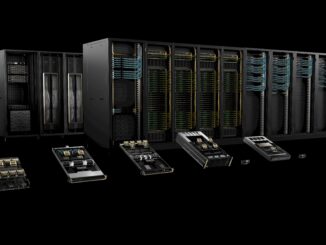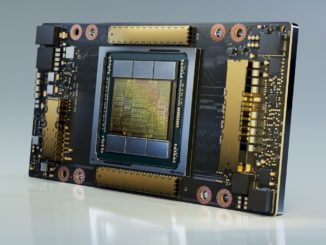
Everyone in the networking industry seems to fall into one of two camps: those that have used server-based routing software and those that have no idea such a thing exists. Now a solution called Free Range Routing (FRR) is taking over cloud and enterprise datacenters around the world and if you are in the latter camp, you’ve probably never heard of it.
FRR traces its roots back to Quagga (and Zebra even before that) that developed into a software routing suite which has been part of the open-source community for nearly 20 years. The Quagga software suite offered BGP, OSPF and RIP support for Linux and Unix servers. This allowed the development of things like BGP route servers or server-based VPN concentrators. Quagga was seen as an amazing tool in the network engineering toolbox by network engineers that understood the value of a software-based router over traditional appliances from the major networking vendors. Quagga made slow and steady progress with a small but dedicated community of developers.

In 2010 when Cumulus Networks was founded, the Quagga routing suite was used as a core component of their datacenter networking software, Cumulus Linux (now part of Nvidia Networking). Cumulus Linux offers both BGP and OSPF routing services to their customers on their disaggregated datacenter switches. Cumulus invested significant resources into the Quagga project in the form of bug fixes, quality assurance, and feature improvements. Every customer-issued fix became a patch delivered back to the Quagga upstream community.
With Cumulus leading the charge, the community of commercial developers began to grow, adding VMware, Orange Telecom, 6Wind, and more. The rate of contributions and new features over the next few years grew beyond what the framework of the Quagga project could provide. A team of developers, led by Cumulus Networks, and including those just named, forked the Quagga project into Free Range Routing (FRR) in 2016 and put it under the governance of The Linux Foundation, ensuring that the project stays strong, open, and fair.
With FRR’s momentum and new home it became more and more popular not just as a routing stack to run on servers, but as a core component to Ethernet switches and other network-based solutions. Running FRR on servers or switches provides SDN, overlay networks, vendor branded-firewall capabilities, and more. The broad application and use case, combined with growing commercial support, has allowed the FRR project to see more than 14,309 commits from more than 400 committers. The power and stability of FRR led Microsoft to include it as part of its open network operating system, SONiC, as well as for Amazon to use in their open source DENT networking software.
The Value Of Routing Software
Being a free, open source application, FRR allows users to easily acquire and use the software. Users start small with simple VM-based labs or with a test software router in their environment. These different use cases show some of the value of a software-only routing application. Different use cases open up, and more deployments become cost effective, when router features and innovation are no longer available only in a hardware router appliance that forces customers to deploy a proprietary hardware-software stack.
There are numerous production deployments using FRR as a software router, including using x86-based internet facing routers, BGP route reflectors, BGP route servers, and even normal endpoint-hosts running routing protocols – often called routing on the host and completely eliminating the need for VLANs, multi-chassis link aggregation (MLAG), or any Layer 2 in the datacenter. FRR routing on the host can also take advantage of SmartNICs like the Nvidia ConnectX, or run on Data Processing Units (DPUs) such as the Nvidia BlueField. This implementation offloads packet processing to adapter silicon, providing host networking that is software-defined and hardware-accelerated.
When using something like routing on the host, unexpected advantages open up, including the ability to move a server anywhere in the datacenter and keep its IP address. Instead of the IP being tied to the top-of-rack switch’s subnet, the IP is now advertised by the routing protocol wherever that server lives or goes.
For users with simple Internet-facing needs, modern CPUs can easily pass 10 Gb/sec or even 25 Gb/sec of traffic with ease. When combined with routing software like FRR, you can now create an Internet router at a fraction of the cost of a traditional edge router. Since that server is just a Linux server, you can add other applications and services like firewalls, load balancers, or even SD-WAN like applications or scripts without the restrictions of classic routers. Use cases that require terabits per second of switching throughput can run FRR on high-performance Ethernet switch hardware like the Nvidia Spectrum family. These switches run FRR and program dedicated ASICs that deliver non-blocking high throughput and super low latency.
For example, customers could choose to run Nvidia Cumulus Linux on their top-of-rack (ToR) switches and SONiC or DENT on their network spine switches, plus run FRR on individual hosts. In this case, three levels of the datacenter are all running FRR for routing and their networking can be managed in the same way.
The Future Of FRR
With such a strong and growing community, the future of FRR is bright. A number of advanced features are on the roadmap including expanding its existing segment routing support, an implementation of Cisco Systems’ EIGRP routing protocol, full YANG-based data models, BGP RPKI support, and more. Now that the AT&T DANOS project also uses FRR as its routing stack, there is significant investment in enhancing service provider features beyond the existing FRR focus on datacenter networking.
Beyond the growing feature roadmap, FRR is also starting to act as the location to fulfill the original IETF motto of “rough consensus and running code.” New protocols being proposed through IETF are leveraging the open nature of FRR to create running implementations of the protocol proposals. FRR is a natural, vendor-neutral place to develop implementations of new standards, while giving anyone access to the code to review and contribute. The addition of OpenFabric to FRR, a working implementation of the OpenFabric IETF draft, is a great example.
Expect to see more FRR in a variety of networking technologies you interact with in the future from firewall appliances to software routers, network operating systems or even server applications that run FRR on the CPU or on a DPU. Although you may have never heard of FRR, you are likely interacting with it and using it to connect to the cloud almost every day.
Get Involved
Free Range Routing is a fully open project, and always looking for contributors for documentation, software or the discussion. You can submit documentation updates via Github, join their mailing list or join the community Slack channel.
If you want an easy way to try out FRR yourself, Nvidia provides a free, cloud-hosted lab of their Nvidia Cumulus Linux software running FRR. You can use Nvidia Cumulus in the Cloud today or get a guided tour including using FRR with the Nvidia Cumulus Linux On Demand labs.
Pete Lumbis is director of networking technical marketing at Nvidia.






No OSPFv3 security?
Had I look at doc.frrouting.org, but can’t find anything on OSPFv3 security.
Where is the equivalent “ipv6 ospf authentication” command?
OSPF3 authentication is implemented by IPsec, not within the OSPF3 protocol as was the case for OSPF2. Configure IPsec on your platform, see RFC4552 for the details.
So this is how servers work? And with FRR the ease of operating has gotten much easier, say a web hosting sevice? And FRR is open source so free to use?